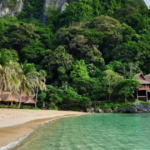Tourism is a vital industry for many economies worldwide, and effective marketing strategies can significantly boost a destination’s appeal. Successful tourism marketing attracts visitors, enhances local economies, and creates sustainable growth for travel destinations.
Understanding Tourism Marketing
Tourism marketing involves promoting destinations to attract domestic and international travelers. It utilizes various strategies, including digital marketing, partnerships, and customer engagement, to showcase a location’s unique attractions and experiences.
Importance of Tourism Marketing
- Increases visitor numbers
- Boosts local economies
- Enhances destination branding
- Encourages sustainable tourism
- Creates employment opportunities
Key Tourism Marketing Strategies
Implementing the right marketing strategies ensures a destination remains competitive and appealing to travelers.
1. Digital Marketing Strategies
The rise of digital platforms has transformed how destinations market themselves to tourists.
a) Search Engine Optimization (SEO)
- Role: Improves online visibility for travel-related searches.
- Strategies: Keyword optimization, content marketing, backlinking.
- Benefits: Increases organic traffic to destination websites.
b) Social Media Marketing
- Role: Engages potential tourists through platforms like Instagram, Facebook, and TikTok.
- Strategies: Influencer partnerships, travel vlogs, user-generated content.
- Benefits: Enhances brand awareness and interaction.
c) Content Marketing

- Role: Provides valuable travel information and inspiration.
- Strategies: Blogs, travel guides, virtual tours.
- Benefits: Establishes authority and attracts organic visitors.
2. Destination Branding
A strong brand identity differentiates a destination from competitors.
a) Creating a Unique Brand Story
- Role: Showcases the destination’s heritage, culture, and experiences.
- Strategies: Slogan development, logo design, storytelling.
- Benefits: Strengthens emotional connections with travelers.
b) Visual Branding and Aesthetics
- Role: Enhances the destination’s appeal through high-quality visuals.
- Strategies: Professional photography, video campaigns.
- Benefits: Increases engagement and attractiveness.
3. Influencer and Partnership Marketing
Collaborating with travel influencers and businesses expands a destination’s reach.
a) Influencer Collaborations
- Role: Leverages travel influencers’ audience to promote destinations.
- Strategies: Sponsored trips, travel blogging, social media takeovers.
- Benefits: Increases trust and engagement.
b) Travel Agency Partnerships
- Role: Works with tour operators to create appealing packages.
- Strategies: Exclusive deals, co-branded promotions.
- Benefits: Attracts more bookings and enhances credibility.
4. Sustainable and Eco-Tourism Marketing
Sustainability is a growing trend in the tourism industry.
a) Promoting Eco-Friendly Travel
- Role: Encourages responsible tourism practices.
- Strategies: Highlighting green initiatives, promoting conservation efforts.
- Benefits: Attracts eco-conscious travelers and preserves natural resources.
b) Supporting Local Communities

- Role: Showcases local businesses and culture.
- Strategies: Community-based tourism, ethical tourism campaigns.
- Benefits: Boosts local economies and enhances cultural preservation.
5. Event and Experience Marketing
Tourists seek unique and immersive experiences.
a) Hosting Festivals and Events
- Role: Attracts visitors through cultural, sports, or entertainment events.
- Strategies: Seasonal festivals, food fairs, music concerts.
- Benefits: Generates tourism demand and media coverage.
b) Personalized Travel Experiences
- Role: Offers tailored experiences based on tourist preferences.
- Strategies: Customized travel itineraries, exclusive experiences.
- Benefits: Enhances visitor satisfaction and loyalty.
6. Traditional Marketing Strategies
Despite the digital age, traditional marketing still plays a role in tourism.
a) Print Advertising and Brochures
- Role: Provides tangible promotional material.
- Strategies: Travel magazines, brochures at airports and hotels.
- Benefits: Reaches offline audiences and reinforces branding.
b) Television and Radio Campaigns
- Role: Broadens audience reach through mass media.
- Strategies: Commercials, sponsored travel shows.
- Benefits: Increases awareness among diverse demographics.
7. Customer Engagement and Reviews
Satisfied tourists act as brand ambassadors, influencing potential visitors.
a) Encouraging Online Reviews
- Role: Builds credibility through customer testimonials.
- Strategies: Incentivizing reviews, responding to feedback.
- Benefits: Enhances destination reputation and trust.
b) Leveraging Word-of-Mouth Marketing
- Role: Encourages travelers to share experiences.
- Strategies: Referral programs, social media sharing.
- Benefits: Attracts organic traffic and new visitors.
Also Read: Travel Guide For First-Time Travelers: Tips & Tricks
Conclusion
Effective tourism marketing strategies are essential for attracting visitors and sustaining a destination’s growth. By leveraging digital platforms, influencer collaborations, sustainable tourism efforts, and personalized experiences, destinations can create a strong brand identity and remain competitive in the travel industry. A well-rounded approach incorporating both traditional and modern strategies ensures long-term success in tourism marketing.
FAQs
1. What is the most effective tourism marketing strategy?
A combination of digital marketing, influencer collaborations, and destination branding is the most effective approach.
2. How can destinations attract more tourists?
By showcasing unique experiences, leveraging social media, offering customized travel packages, and ensuring a seamless visitor experience.
3. Why is sustainable tourism marketing important?
Sustainable tourism marketing attracts eco-conscious travelers while preserving natural and cultural heritage.
4. How do influencers impact tourism marketing?
Influencers have a large following and can inspire potential tourists through authentic travel experiences and recommendations.
5. What role does storytelling play in tourism branding?
Storytelling creates emotional connections with travelers, making destinations more appealing and memorable.




